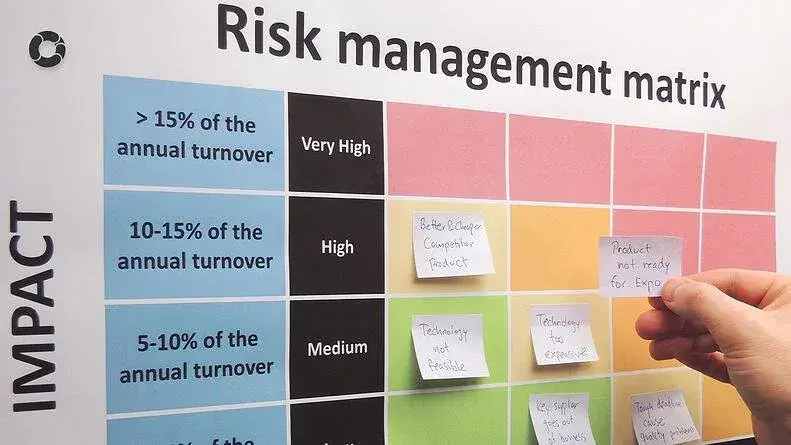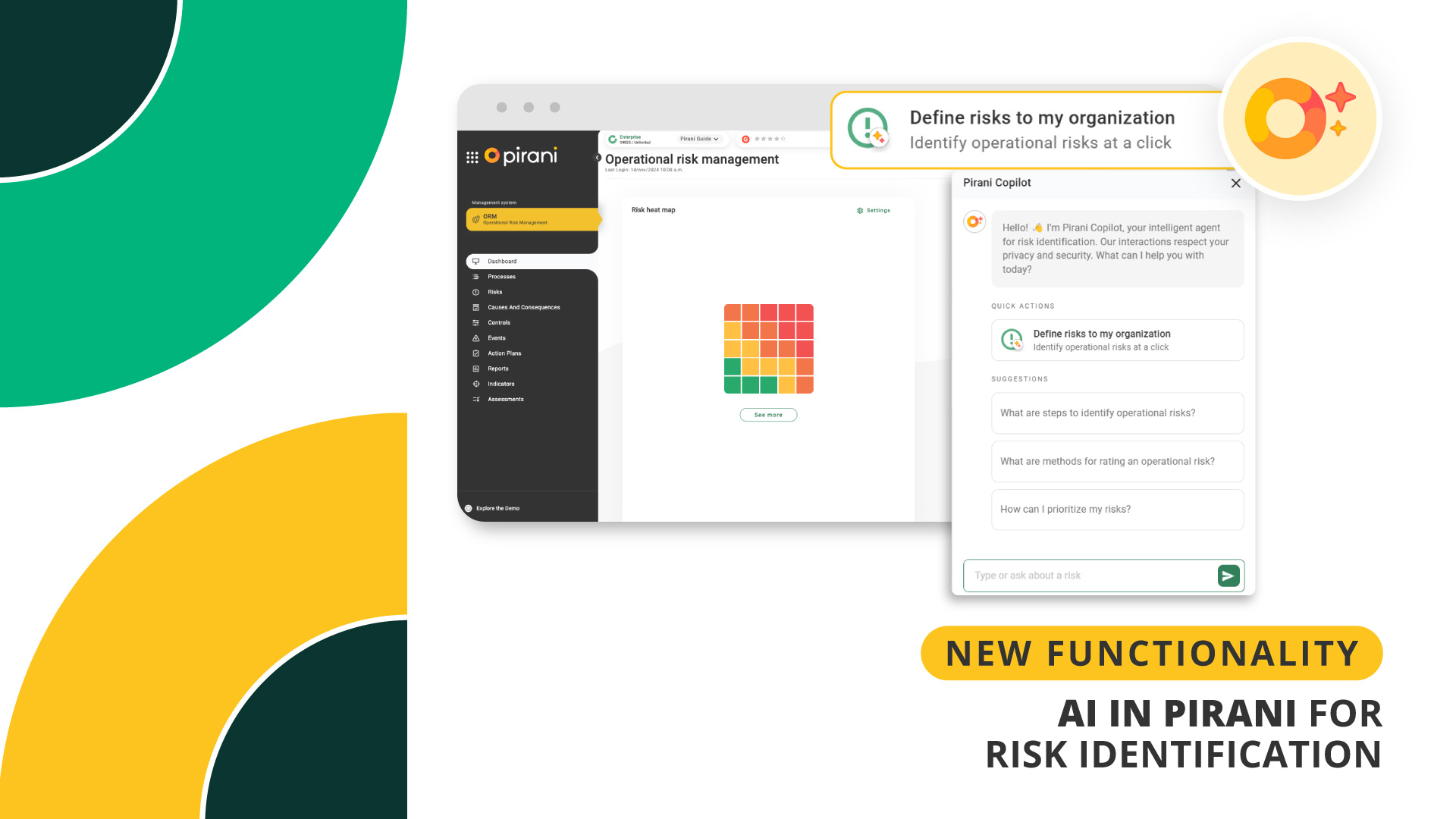Understanding the Main Objectives and Purposes of Risk Management

Effective risk management is crucial for every organization, as it helps to identify, analyze, and mitigate potential risks that could arise from various internal and external factors. By implementing a strong risk management plan, companies can safeguard their operations, assets, and reputation from unexpected disruptions or financial losses. However, many businesses may not fully understand the purpose behind risk management or why it is so essential to their strategic planning.
In this guide, we will delve into the key objectives of risk management and explore its underlying purposes. By understanding these elements, your organization can appreciate the importance of risk management and leverage it to achieve long-term success. Additionally, we’ll look at how tools like Pirani facilitate a seamless risk management process by allowing different team members to actively identify, measure, control, and monitor risks.
In order to implement a risk management plan, it is important to identify and analyze the risks that could arise within the company so that, based on this, actions can be taken to help mitigate the consequences they may cause. However, on many occasions, it is not clear why they should be implemented and what their purpose is.
Key Objectives of Risk Management
Risk management serves two fundamental objectives that form the foundation of an effective risk strategy:
1. Risk Identification
The first objective is to identify all potential risks that could impact the organization. These risks could be financial, operational, legal, or reputational, and they may arise from various internal processes or external factors such as market changes, regulatory shifts, or technological disruptions. A thorough risk identification process helps the company to pinpoint where vulnerabilities lie and to develop strategies to mitigate those risks.
2. Risk Mitigation and Control
Once the risks are identified, the next objective is to implement a plan to control and mitigate these risks. This involves selecting the appropriate tools, methods, and resources to minimize the potential damage. A proactive approach to risk mitigation ensures that the company is prepared to handle risks before they escalate into larger issues. This not only helps to prevent losses but also enables the organization to respond quickly and efficiently in case a risk materializes.
By addressing these two objectives, organizations can establish tailored strategies that balance risk exposure with potential solutions. This balance is key to creating a stable operational environment where risks are managed, not ignored.
The Role of Risk Management in Strategic Planning
As Al Decker and Donna Galer of Auditool.org state, "Whether an organization has a formal strategic plan or simply a set of objectives, enterprise risk management (ERM) is a key element in ensuring its success." A strategic plan should not only define the organization's goals and tactics but also incorporate a risk management framework to identify potential threats and outline mitigation strategies.
Enterprise Risk Management (ERM) goes beyond addressing risks in isolated areas; it integrates risk management into the broader strategic goals of the company. By doing so, organizations can anticipate challenges that may arise and develop a more resilient operational structure.
Purposes of Risk Management
Risk management is not only about meeting objectives but also about ensuring that the organization’s overall strategy aligns with its risk tolerance and appetite. Below are some of the core purposes of implementing an effective risk management plan:
1. Aligning Risk Appetite with the Adopted Strategy
An organization’s risk appetite refers to the level of risk it is willing to accept in pursuit of its objectives. Effective risk management ensures that this appetite is aligned with the company’s strategy, allowing leaders to take calculated risks without jeopardizing the organization’s stability. Managers must assess potential risks while considering internal goals, external conditions, and the tools that will be used to mitigate risks. By aligning the risk appetite with strategy, companies can achieve their goals without exposing themselves to excessive risk.
2. Strengthening Decision-Making in Response to Risks
An important purpose of risk management is to improve decision-making capabilities. When managers have a clear understanding of the risks facing the organization, they are better equipped to make informed decisions about how to respond to those risks. This involves selecting the right mechanisms for risk response, such as avoidance, mitigation, transfer, or acceptance. Informed decisions reduce uncertainty and improve the chances of successful outcomes.
3. Reducing Contingencies and Operating Losses
One of the biggest benefits of risk management is the reduction of operational losses due to unforeseen events. As businesses evolve, they face a growing number of risks—from cyber threats to supply chain disruptions. A proactive risk management approach helps companies quickly identify potential risks and put in place solutions that mitigate or eliminate these risks. By doing so, they reduce the likelihood of being caught off guard and minimize the financial and operational impact of unforeseen contingencies.
4. Identifying and Managing Multiple Risks Across Projects
Every organization faces multiple risks simultaneously, especially when it manages several projects or initiatives. Risk management provides a framework for identifying, categorizing, and prioritizing risks across different projects. This ensures that resources are allocated effectively and that high-priority risks are addressed promptly. By managing multiple risks across the organization, companies can ensure smoother operations and avoid delays or disruptions.
5. Seizing Opportunities
While risk management is often seen as a defensive strategy, it also provides opportunities for growth and innovation. By having a clear understanding of the risks involved in different ventures, organizations can identify new opportunities that may have been overlooked. Additionally, companies can take advantage of risk management to act quickly and strategically in response to potential threats, turning challenges into opportunities.
6. Optimizing Capital Allocation
A key benefit of having accurate risk information is the ability to optimize capital allocation. When managers are aware of the risks and their potential financial impact, they can make more informed decisions about where to allocate resources. This leads to a more efficient use of capital, allowing the organization to invest in areas that will generate the most value while minimizing exposure to risks.
How Risk Management Helps Organizations
Risk management, when implemented effectively, acts as a guiding framework for organizations to anticipate, plan for, and respond to a variety of risks. Below are a few key ways in which risk management benefits organizations:
- Increased Resilience: Risk management builds organizational resilience by identifying vulnerabilities and preparing the company to respond to unexpected events. This reduces downtime and minimizes losses.
- Enhanced Reputation: Companies that manage risks effectively are viewed as more trustworthy and reliable. Stakeholders, including investors, customers, and employees, are more likely to have confidence in a company with a strong risk management system.
- Regulatory Compliance: Many industries are subject to regulations that require specific risk management practices. By adhering to these regulations, companies avoid legal penalties and protect their reputation.
- Improved Operational Efficiency: A well-structured risk management system helps companies streamline their operations. By proactively addressing potential disruptions, they can maintain smooth processes and prevent costly interruptions.
The Role of Technology in Risk Management
Technology plays a critical role in modern risk management practices. With tools like Pirani, organizations can easily involve multiple members in the risk management process. Pirani enables users to identify, measure, control, and monitor risks, all within a single platform. This makes risk management more accessible and ensures that all departments and team members are aligned in managing risks effectively.
Risk management is a vital component of any organization’s strategy. By identifying, assessing, and controlling risks, companies can protect their assets, ensure business continuity, and improve decision-making. With the right tools and a clear understanding of risk management’s objectives and purposes, organizations can build a resilient, risk-aware culture that drives long-term success. Implementing a comprehensive risk management plan not only safeguards the company but also opens the door to new opportunities and strategic growth.
You May Also Like
These Related Stories

Heat map: a tool to optimize risk management

Pirani Copilot: The AI that empowers risk management

Learn 5 strategies to manage risk

Manage the threats and vulnerabilities of your information assets.

Achieving Compliance Mastery with Pirani



No Comments Yet
Let us know what you think